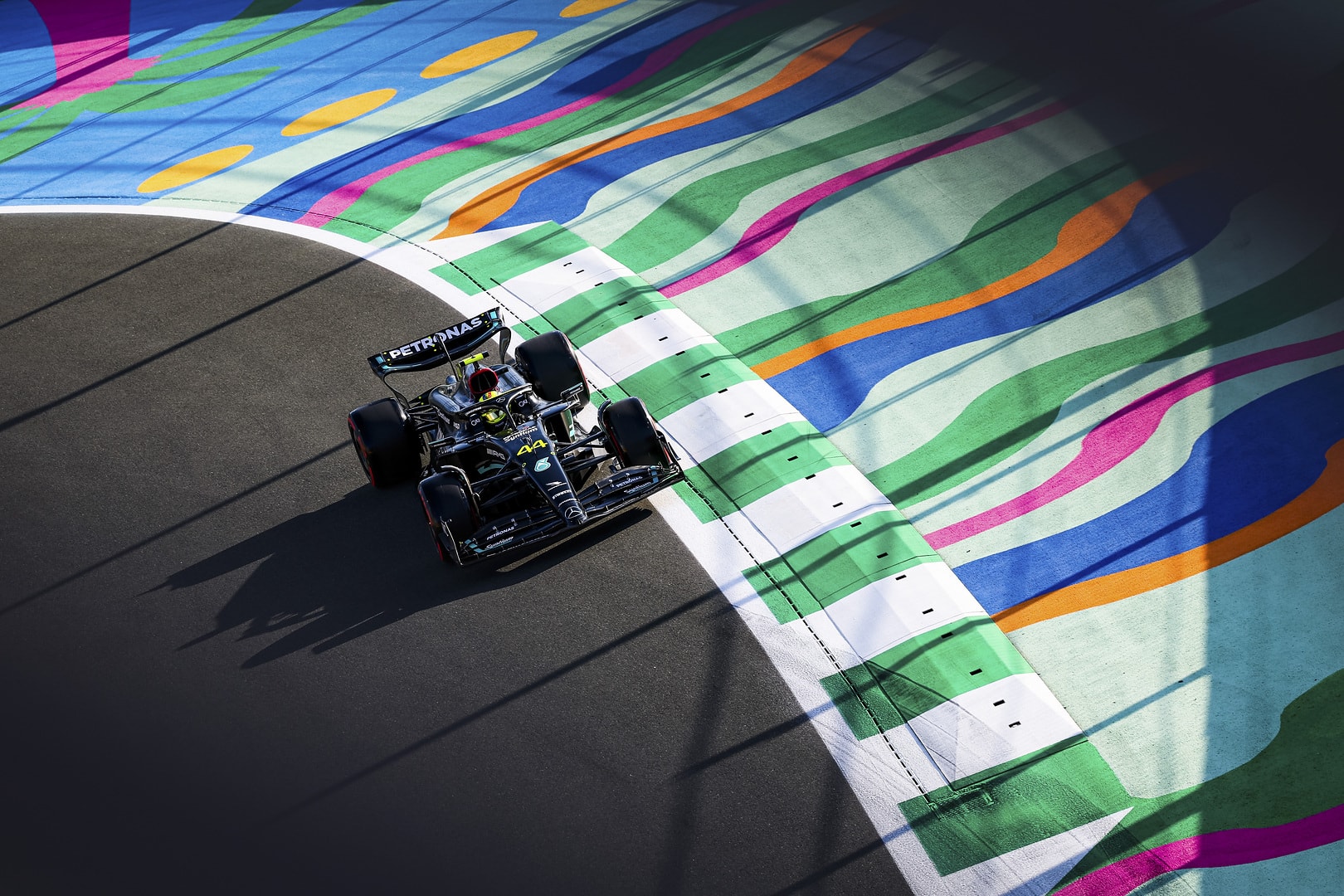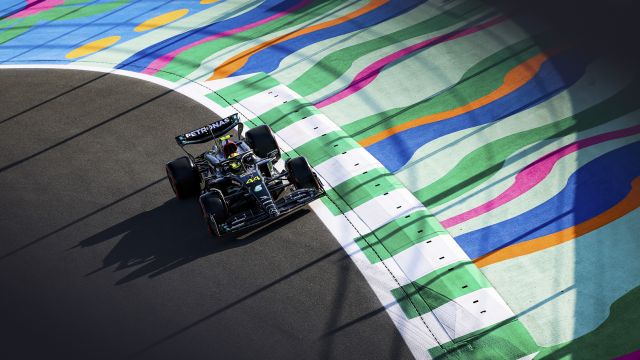Why Is Jeddah Called A Street Circuit?


The Jeddah Street Circuit‘s designation as a “street circuit” lies in its unique layout, which incorporates public roads that are typically open for daily traffic yet are specially repurposed for high-octane racing events. This blend of everyday streets and racing tarmac offers an exhilarating experience for both drivers and spectators, fostering an almost festive atmosphere in the bustling city of Jeddah.
With a staggering 27 turns, Jeddah’s circuit stands out for having more corners than any other in the Formula 1 calendar. However, the fluidity of its design prompts several of these corners to feel almost like straightaways to drivers, as they navigate them flat-out with remarkable speed. This aspect introduces a new layer of strategy and skill, where precision and control become as important as the power and agility of the vehicles themselves.
Located along the scenic Corniche of Jeddah, a coastal resort strip, the circuit serves as a temporary racing oasis within the urban fabric. Its high average speeds, which rank among the fastest in the world of Formula 1, juxtaposed with the ever-present coastal winds, create an environment where mastery and daring are on full display. The track, a focal point of the Saudi Arabian Grand Prix, thus offers a blend of top-tier engineering and the raw challenge of motorsport, much to the delight of racing aficionados all over the world.
Overview of Jeddah Street Circuit
The Jeddah Street Circuit stands out as one of the most captivating tracks on the Formula 1 calendar. Located in Saudi Arabia, the circuit weaves through the Jeddah Corniche, combining both temporary and permanent sections of roadway. This configuration allows the circuit to be classified as a street circuit, with roads usually accessible to the public repurposed for high-speed racing during events.
Key Characteristics:
- Total Turns: 27, the highest number in F1
- Average Speeds: Reach up to 253.9 km/h
- Qualification: Fastest street circuit in F1
The circuit’s design takes advantage of the long stretches along the coast, incorporating high-speed sections that challenge even the most skilled drivers. As a result, it’s recognized for its intensity and the sheer speed it affords, surpassed only by Monza in terms of average velocity.
Construction Approach:
- Temporary Use: Roads are closed during races
- Permanent Features: Some sections are built to last
In terms of sheer number of turns, the Jeddah Street Circuit tops the list, with four more than Singapore and six more than Abu Dhabi. Despite this, many turns are actually taken at such speed that they are perceived as straights by the drivers, adding to the thrills on offer.
Track Layout:
- Lengthy High-Speed Sections: Encourage flat-out racing
- Turn Diversity: Mix of high and low-speed corners
Formula 1’s commitment to exciting, high-speed racing meets an ideal match at the Jeddah Street Circuit, making it a memorable stop for fans and participants alike. With its impressive combination of speed and technical challenge, the circuit solidifies its status as a distinguished and demanding venue in the world of motorsport.
Characteristics of Street Circuits
Street circuits are synonymous with motor racing events held on public roads. These tracks contrast with permanent racetracks as they repurpose existing infrastructure for racing events. The composition of a street circuit can often lead to tight corners and a narrower driving space, challenging drivers’ precision and control.
A defining feature of street circuits is their interaction with the urban environment. They snake through city streets, often encapsulating elements like tight chicanes, rapid changes in elevation, and various surface changes from one sector to another. This environment boosts the visual spectacle for spectators, contributing to the circuit’s allure.
The impermanence of street circuits necessitates temporary infrastructure, such as safety barriers and grandstands, to host the racing event. This can mean that parts of a city are intermittently closed to regular traffic to accommodate the race. Street circuits require detailed planning to minimize disruption to urban life.
Further characteristics include:
- Variable Grip Levels: Racing lines intersect with pedestrian crossings and road markings, affecting traction.
- Circuit Width: A mix of wide straights that allow for overtaking and narrow bends demanding careful maneuvering.
- Race Weekend Transformation: Public roads transform into a racetrack with the addition of curbs, tire barriers, and catch fences for safety.
Street circuits, like Jeddah, present a blend of rapid sections and technical challenges that test the mettle of drivers and the performance of their vehicles. This harmonious yet testing coexistence with city life offers a unique atmosphere distinct from purpose-built tracks.
Historical Context of Jeddah Street Circuit
The Jeddah Street Circuit, a marvel in the realm of motorsports, claimed its fame by joining the Formula 1 roster in 2021. Situated by the Red Sea, in the coastal Corniche area of Jeddah, it stepped into the spotlight as the fastest street circuit in the storied history of Formula 1. The track was conceived as a high-speed challenge for drivers, contrasting the traditional expectations of street circuits, which often feature tight twists and lower speeds.
A street circuit is distinguished by its integration into the city’s infrastructure, with events often disrupting normal traffic flows. Jeddah qualifies because it utilizes roads typically in service for public transportation—transforming them into a competitive racing venue.
| Feature | Detail |
|---|---|
| Circuit Length | Second longest on the 2021 F1 calendar |
| Average Speed | Among the highest in F1 circuits |
| Number of Corners | 27, more than any other current F1 track |
| Layout Characteristics | Fast-flowing with long straights and swift turns |
Architecturally, it boasts a design crafted by renowned track designers, Tilke Engineers & Architects, who infused speed into every curve and corner. In comparison to historical brethren, Jeddah’s 27 corners—mostly sweeping arcs—shake up expectations by feeling more like straights, permitting drivers to maintain extraordinary velocity.
Despite its recent inauguration, the Jeddah Street Circuit rapidly left its mark as a challenging, high-velocity course within the cityscape, ripe with opportunities for drivers to demonstrate their skills, and for fans to revel in the thrill of Formula 1.





